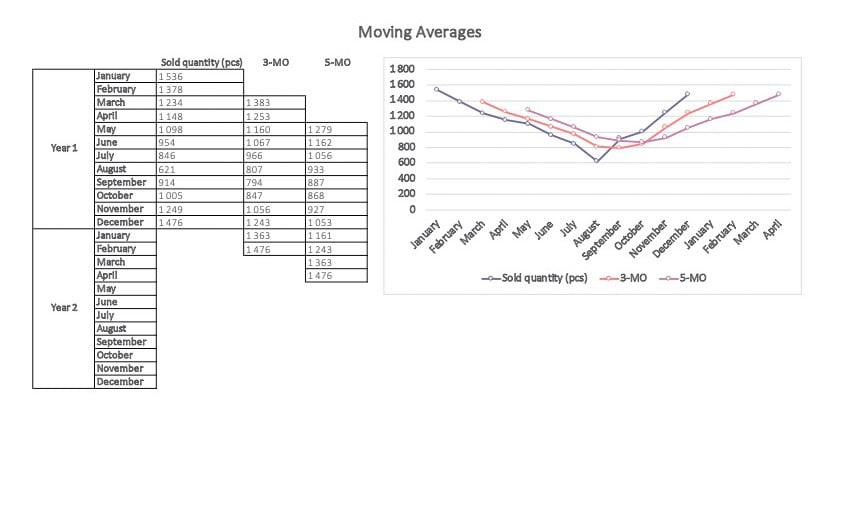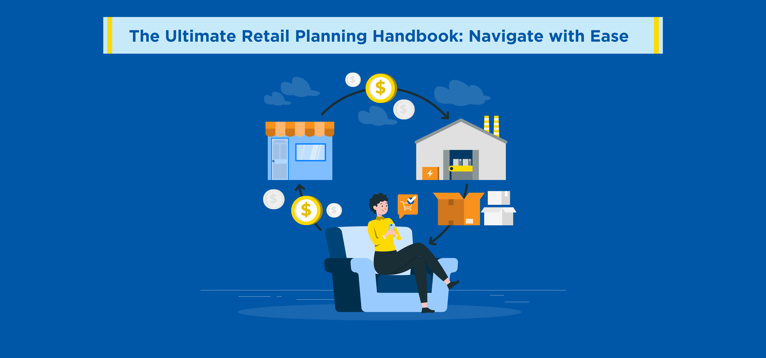Being in a retail business, do the following scenarios sound familiar to you?
The inventory you order and display in your brick-and-mortar or online store so diligently does not align with customer demand. Or your customers frequently have been disappointed due to the items marked “Out of stock” or “Notify me when back in stock.” Or you often run out of bestsellers.
If yes, this read is tailor-made for you.
Maintaining the right amount of products at the right time for the right customers with the right selling price might feel like an impossible feat in a hyper-competitive and omnichannel retail sector. Though one can’t be 100% efficient, the good news is—it is achievable, and the key is retail planning.
But what exactly is retail planning, and why and how do you create a retail business plan? Follow this article ahead to learn it in detail.
What is Retail Planning?
Retail planning is a data-driven approach retailers take to meet customer demands while maximising the return on investment. They achieve this by making available the goods at the right time, place, quantity, and price.
Strategic retail planning hinges on choosing, buying, and selling merchandise that meets customer needs, propels brand value, and increases ROI. Retail planning also emphasises pricing the products right and observing competition. All this while mitigating the risk of over or under-storage of inventory.
Retail planning should be an ongoing process for a retail business to reap its benefits. It enables retailers to adjust to the shifting retail trends by analysing the current market and customer behaviour, creating a plan, putting the plan into action, and then analysing the results.
Why is Retail Planning Crucial?
While the retail industry has made significant progress in inventory management, inventory distortion has grown into a $1.9 Trillion issue worldwide.
Amidst market volatility and supply chain constraints, the challenging retail outlook results in just one-third of retail executives feeling confident about improving their profit margins.
But it doesn’t have to be all gloom and doom.
Efficient retail planning is the one strategy that retailers can leverage to consistently keep the customer experience at the heart of retail operations and drive future profitability.
A well-rounded retail planning for your retail store comes in handy when:
- Making crucial decisions
- Improving customer satisfaction
- Managing inventory
- Boosting efficiency and sales
For budding retailers unaware of why they need a retail action plan, here are some more benefits of retail planning.
- Retail planning helps you stock your warehouse with “just right” inventory in a way that increases the inventory turnover ratio and hence, ROI.
- Because of the availability of the right products, there is less need for markdowns of excess or outdated stock.
- It reduces inventory storage and carrying costs arising from too much inventory. Plus, you also make significant savings on shipping, logistics, depreciation, etc.
- Customer loyalty increases when customers have enough products to make purchases faster with fewer stock-outs.
- It better prepares you for future trends and risks and stay competitive while meeting demands.
- It improves the omnichannel order fulfilment process.
5 Steps To Creating Strategic Retail Action Plan
Every retail business will have a different approach to retail planning to suit its specific goals. While a fashion retailer must focus on apparel design, size, and colour for demand planning in retail, an online grocery store will consider season-led variations in edible food products.
Nevertheless, we’ve got the breakdown of the fundamental retail planning process that any retailing business can use to structure its action plan for retail sales.
But before that a brief rundown of the five Ps of retail planning:
Price- The right pricing strategy for products.
Product- Benefits of using routine as well as seasonal products.
Promotion- The marketing campaigns to build awareness.
Place- Where people see displays of products.
People- The staff that works for your retail business, including you.
Now that you know the basic elements of retail planning, here is the step-wise process of retail planning.
1. Post-season analysis
The journey of strategic retail planning begins with the analysis of the previous season’s sales. Here, you will look at your sales and revenue performance during the past season. The important thing to remember is to dive deeper into monthly and even weekly data of specific products, categories, and stores.
Then, you will undertake a gap analysis by comparing postseason sales data to the planned numbers from the same year. For a better understanding of the pattern, it is advisable to have such data for multiple sales seasons.
This information will serve as a basis to create a strategy for the season ahead.
For instance, you could look at historical data to determine what should be purchased and what quantity. Or which products to keep or remove or which marketing strategies worked or did not work to boost sales.
But while analysing the data, be sure to involve your sales and marketing teams so that you can gain the contextual perspective of the raw data you gathered.
2. Sales forecasts
Once you have accrued data and identified trends from past sales seasons, you will use it in the future and anticipate future sales.
Sales forecasting estimates your company’s sales revenue for a specific period, such as a month, quarter, or year. Simply, it predicts how much your retail business will sell in the future.
Most retailers continue to combine techniques such as Excel, ERP, and business intelligence tools to crunch sales data into actionable forecasts.

Nonetheless, AI-powered forecasting analytics solutions are much simpler and faster alternatives to reveal your products' sales potential.
3. Budget Planning
Budgeting aims to estimate the investment in merchandise based on expected sales projections. It requires you to undertake strategic merchandise financial planning wherein you’ll source, price, and distribute merchandise your customers want to buy.
It ensures that you only spend on products you need in a given period and yield maximum ROI. With careful financial planning, you will procure merchandise as per the requirement of each store and department.
4. Assortment Planning
Once you know what products to stock, you’ll move on to a more granular assortment planning. Here you’ll choose which product assortment needs to be sold during a certain period. For example, if you are a clothing brand, you can plan an assortment based on seasonality—breathable fabric for summer and sweaters for winter.
As a part of retail planning, you will also define the product assortments to different locations in a way that maximises profit. For example, if one of your retail clothing stores is in a location that’s snowy most time of the year, then the store will mostly have warm clothes for sale.
5. Merchandise Controlling
After you have bought and assorted products, the task of maintaining them at an optimum level begins. Through merchandise control, retail planning maintains a fine balance between purchasing and selling merchandise. You can control merchandise and avoid over or under-stocking by regularly monitoring the stock level. It will ensure you replenish the items before they reach dangerously low stock levels. At the same time, you can also prevent over-ordering that eats into your bottom line.
Wrapping Up
Brick-and-mortar or online store or both, your retail business needs a well-rounded retail planning strategy. Devising and executing a solid retail action plan is a great way to meet customer demand with the right amount of inventory while generating the maximum possible revenue.
That said, retail planning is not a low-hanging fruit. Getting it right might feel like a tall order to retailers. A lack of a clear approach might also lead your retail business to drain finances. Partnering with the right 3PL can help avert such a scenario.
3PL comes with its battle-proven inventory management and retail order fulfilment capabilities that are hard to access, especially for smaller companies. Their well-established network of shipping partners, warehousing, and distribution facilities ensures you profitably attain your retail planning objectives.
To learn more about how PACK & SEND can help you with your retail planning execution, talk to our experts now!
Image source: Ryax Technologies
